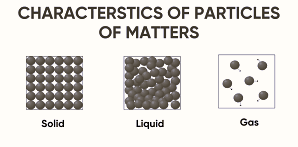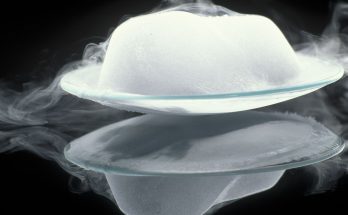Table of Contents
Dilution Experiment: Demonstrating the Small Size of Matter Particles
Objective
This experiment helps to understand that matter is made up of extremely tiny particles. It shows how a small amount of a substance can affect a large volume of water, demonstrating the divisibility and small size of particles.
Materials Needed
- Crystals of potassium permanganate or 2 mL of Dettol.
- Two containers (beakers or glasses).
- A measuring cylinder (optional).
- Water.
Steps to Perform the Experiment
- Take a small amount of water (about 10 mL) in a container. Add a few crystals of potassium permanganate or 2 mL of Dettol to the water.
- Stir the solution until it dissolves completely. Observe the water turning purple (potassium permanganate) or releasing a strong smell (Dettol).
- Take 10 mL of this solution and pour it into another container with 90 mL of clear water.
- Stir the new solution thoroughly. Observe that the color or smell is lighter than the first solution.
- Repeat this process 5 to 8 times. Each time, take 10 mL of the solution from the previous container and add it to 90 mL of fresh water.
- Observe whether the color or smell remains noticeable after each dilution.
Observations
- The first solution has a strong color (or smell).
- With every dilution, the color becomes lighter or the smell becomes weaker.
- Even after several dilutions, a faint color or smell remains detectable.
Also Check – Chapter 1 -MATTER IN OUR SURROUNDINGS -Class 9 – Simplified Notes
Concepts Behind the Experiment
- Matter is Made of Tiny Particles
The crystals of potassium permanganate or drops of Dettol are composed of millions of tiny particles. These particles are so small that they can spread throughout a large volume of water. - Divisibility of Particles
When dissolved in water, the particles of potassium permanganate or Dettol split into even smaller units. These smaller units spread out evenly, allowing the color or smell to persist even after multiple dilutions. - Even Distribution
The particles of the substance distribute themselves evenly in the water. This is why the entire solution shows color or smell, not just one part of it.
Key Learning
- Particles are Very Small
Even a tiny amount of a substance contains an unimaginably large number of particles. These particles keep dividing and spreading. - Matter is Particulate in Nature
The experiment shows that matter is not continuous but made up of discrete particles that can spread and dissolve. - Effect of Dilution
With every dilution, the concentration of particles decreases. However, their presence can still be detected, proving their tiny size.
Intext and additional Question Answers on Activity Dilution Experiment: Demonstrating the Small Size of Matter Particles
1. What happens to the potassium permanganate (or Dettol) when added to water?
When a small crystal of potassium permanganate or a drop of Dettol is added to water, it dissolves and spreads uniformly. The water changes color (purple for potassium permanganate) or gains a scent (for Dettol), indicating the presence of tiny, evenly distributed particles.
2. Why does the color or smell spread throughout the water?
The particles of potassium permanganate or Dettol are in constant motion due to the kinetic energy of water molecules. This movement allows them to spread evenly across the water through the process of diffusion.
3. What happens when you take 10 mL of the colored water and add it to 90 mL of clear water?
The color becomes lighter, but it does not completely disappear. This shows that even though the solution has been diluted, the particles are still present in the water.
4. What do you observe after several dilutions?
After repeated dilutions, the color becomes extremely faint but remains visible. This demonstrates that the potassium permanganate particles are extremely small and that even a tiny crystal contains a huge number of particles that continue to distribute in the water.
Additional Questions for Better Understanding
5. What does this experiment prove about the size of matter particles?
The fact that the color remains even after multiple dilutions proves that matter is made up of tiny, indivisible particles that are too small to see individually but still exist in large numbers.
6. How does this experiment demonstrate the particulate nature of matter?
It shows that matter is not continuous but is made of discrete particles. These particles can spread and mix on their own, proving their independent existence.
7. Why doesn’t the potassium permanganate settle at the bottom instead of mixing?
The random motion of water molecules keeps the potassium permanganate particles suspended and evenly distributed. This motion prevents them from settling at the bottom.
8. How does diffusion help explain real-life phenomena?
- The spreading of a drop of ink in water.
- The smell of perfume spreading in a room.
- Sugar dissolving in tea and making the entire cup sweet.
Conclusion
This experiment shows that matter is made up of extremely small particles. A few crystals of potassium permanganate or a small amount of Dettol can spread and affect a large amount of water. This teaches the concept of particulate matter and how it interacts with its surroundings.

